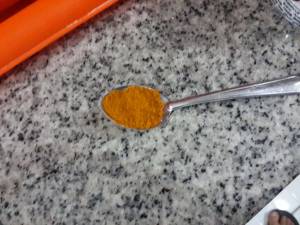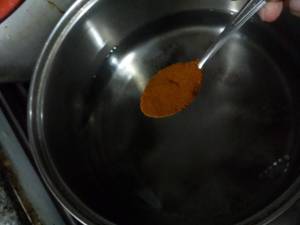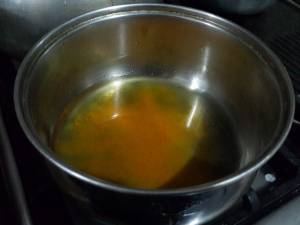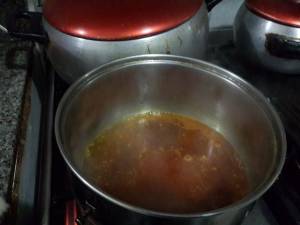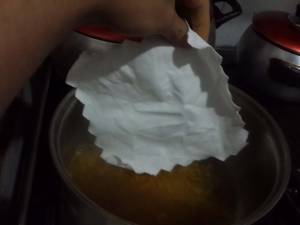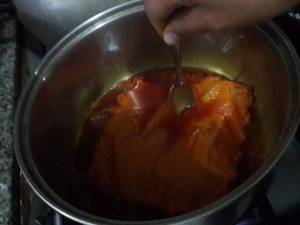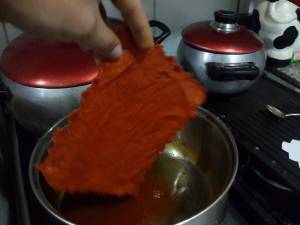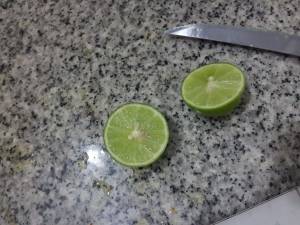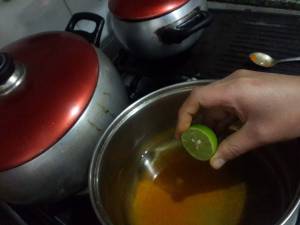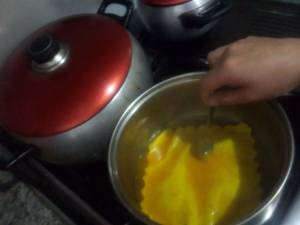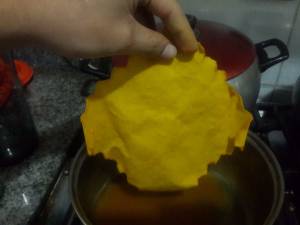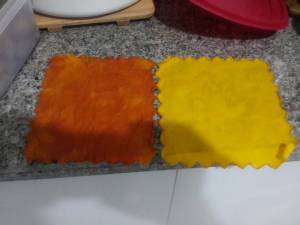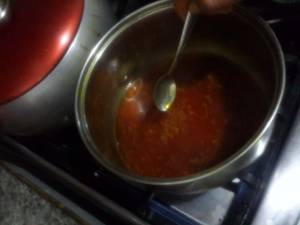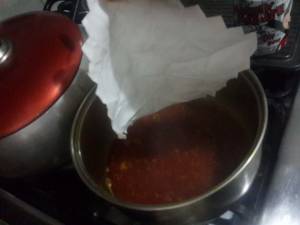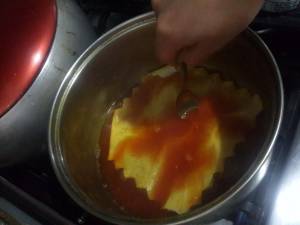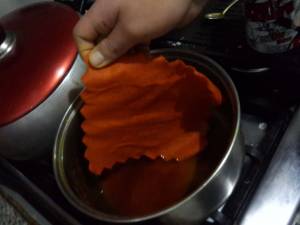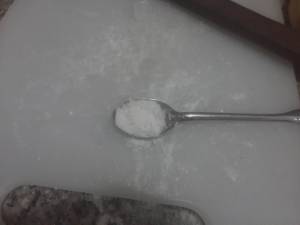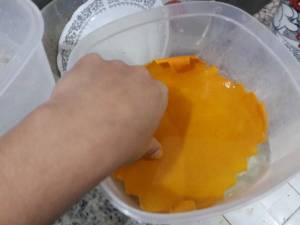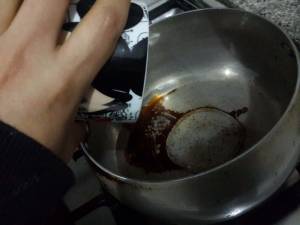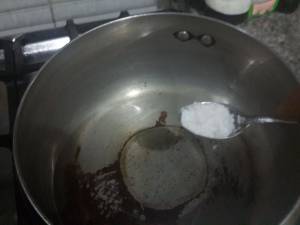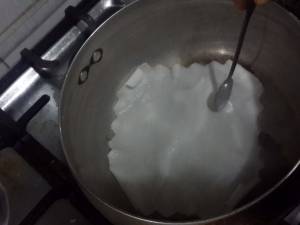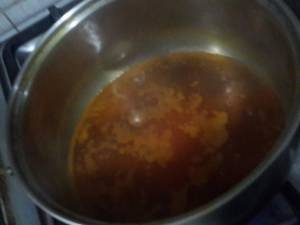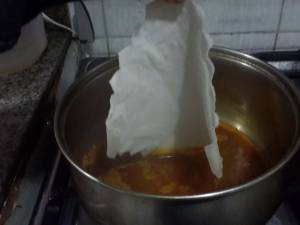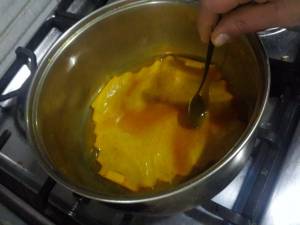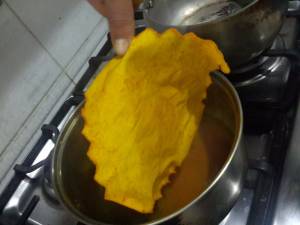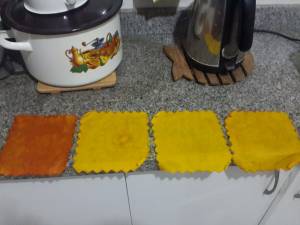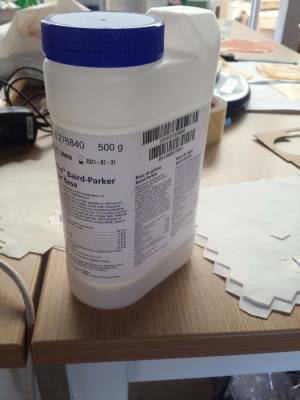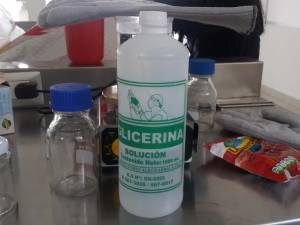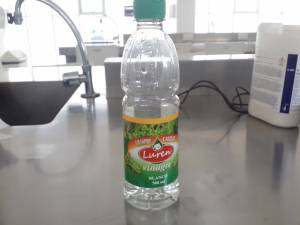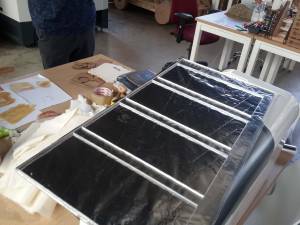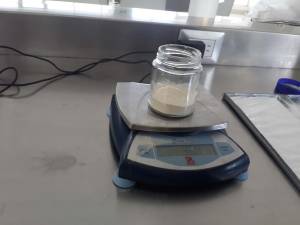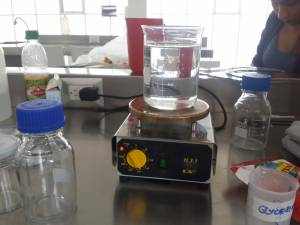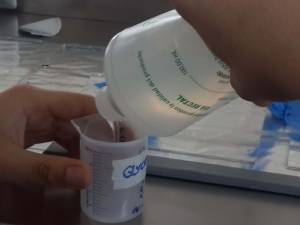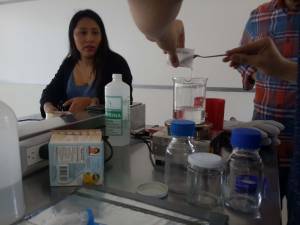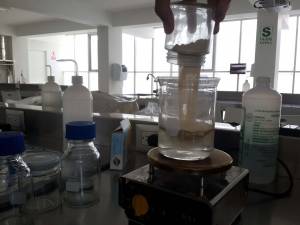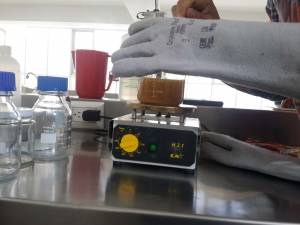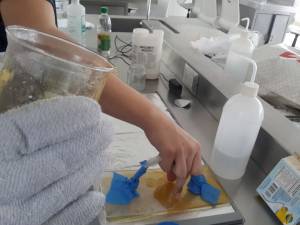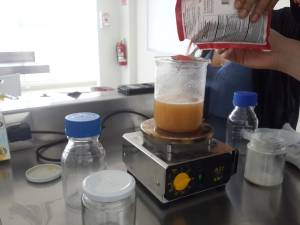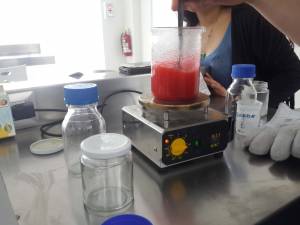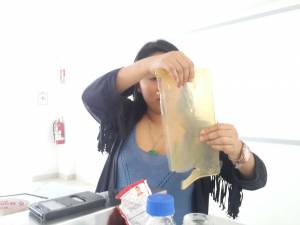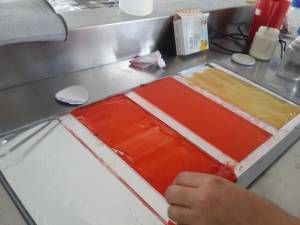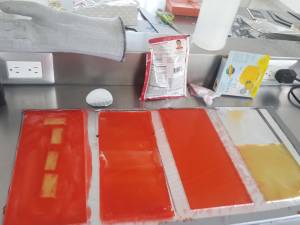Table of Contents
Bio Dyes & Bio Fabrics
Assignment
The students can work in group, identifying tasks and splitting them, as long as they all proof they are able to carry out each task.
Explore at least:
- (Done) 1 natural dye or bacterial dye
- (Done) 1 crafted or grown material
Dont just reproduce, mix, match, change amounts or patterns and compare.
Order, display, map / compare and credit, for the process and the results:
- Ordering – organised material is knowledge. Name your materials, classify them by typology.
- Displaying – display them in a way that makes sense. Badly displayed materials, loose all their beauty.
- Mapping is essential for comparing results. Change small elements in a recipe and compare the results.
- Credit your recipes and changes
Natural Dye
I was not sure about how to natural dye, since I recieved diferent opinions of people that worked dyeing clothes.
I identified three processes for dyeing with the mordant:
- a) Dyeing without mordant at the beggining.
- b) Dyeing with mordant at the beggining.
- c) Dyeing with mordant at the end.
Also, I identified different versions about the water temperature:
- a) I was told to dye with boiling water.
- b) I was told to dye with hot water but not boiling.
Also I identified different versions about the time of dyeing, about the relationship between the quantity of water and the fabric and about the use of the mordant. According to some inquiries I made, I shoul have use a quantity of water so that it slightly covers the fabric, in my case it was 3/4 of a cup of water for the cooking pot I have and my 15 cm x 15 cm piece of fabric. I knew that the temperature of water made darker the color of the dye, so the temperature will just influence on the darkness of the color, thus, I decided to dye at boiling. For that quantity of water I was told to boil it for around five minutes.
I did the following tests:
- a) Dyieing without pre-mordant and post-mordant
- b) Dyieing with lemon juice and without pre-mordant and post-mordant
- c) Dyieing with pre-mordant and no post-mordant
- d) Dyieing with post-mordant and no pre-mordant
A and B for checking the color change; and C and D for checking how well the dye was added to the fabric.
Reciepes A, B, C and D combine in different order the next elements:
- 1 tea spoon of alum.
- 3/4 cup of watter.
- 1 tea spoon of turmeric.
- Lemmon Juice (Around 1 Spoon).
Dyeing Process
The process I followed for dyeing the fabrics was the following :
1. Cleaning the piece of fabric (For A, B C and D)
For removing the oil or waxes from the animal fiber, I cleaned the piece of fabric with soap.
2. Preparing the mordant (Only for C)
For the quantity of water that I used (3/4 of a cup of water) I was told to use around a cubic centimeter of alum for preparing the mordant.
So I poured that quantity of water into a cooking pot, pulverized an alum stone, poured the alum dust in the water and mixed it.
3. Mordanting the piece of fabric (Only for C)
I putted the fabric inside the cooking pot with water and warmed it until it started to boil.
4. Preparing the natural dye (For A, B C and D)
I poured water into another cooking pot and poured a tea spoon of turmeric into the water.
5. Dyeing the piece of fabric (For A, B C and D)
- I warmed the cooking pot until it started to boil.
- Inmediately I put the piece of fabric inside the cooking pot.
- I waited for 5 minutes and turned off the burner.
- Finally I waited until the fabric cooled down and retired it form the cooking pot.
6. Preparing the mordant (Only for D)
I pulverized a cubic centimeter of alum stone and poured it in a pot that contained 3/4 of a cup of water and mixed it.
7. Post-mordanting (Only for D)
I took the piece of fabric and put it in the pot with mordant for 5 minutes too.
8. Waiting for it to Dry (For A, B C and D)
Finally I anged out the pieces of fabric and waited for 3 hours until they got dry.
Dyeing The Fabrics
There was an evident difference in color with test A and test B, with A being much more darker since it didnt was done with lemon juice.
On test C and D it seemed that there were some remainings of lemon juice at the cooking pot since the color of them were lighter than test A wich did not included lemon juice as well. However this two test were about the efficiency of dyeing with pre-mordanting or post-mordanting. So I waited for some weeks to look how the color of the pieces of fabric changed.
So after some weeks, The result was that, the fabrics form test C and D finished with almost the same color they got just after they were dyed. And when compared with the ones used on test A and Test B, It could be seen that the pieces on test C and D kept better the colour through time. Finally, the piece of test A (the one that was darker to the rest at a begining) finished with a color similar to the other three pieces.
Bioplastics
Bioplastics are made of polymers (as agar, starch or gelatine), a plasticizer (as glicerine) and additives (as vinegar). The polymer gives the strength, the plasticizer apports with flexibility and the additive betters the solution of the polymer or adds color.
For working with bioplastics, I worked with Carlos, Ale and Eldy at a chemestry lab. Eldy had previously made some tests with bio plastics and finished with the following recipe:
- Agar: 12 g
- Glycerine: 10 ml
- Vinegar: 10 ml
- Water: 60 ml
- Cooking time: 5 minutes
Based on that recipe we made the following tests.
- A) Original recipe
- B) Original recipe with 1 spoons of gelatin
- C) Original recipe with less than 1 spoon of gelatin and more agar
- D) Recipe C with a mix of pieces obtained on recipe A
In general the steps we did were the following
1. We boiled the specified amount of water.
2. We added white vinegar and glycerine.
3. We Added Agar.
4. We mixed over low heat for 5 minutes.
5. We pured the mix over a mold we made with acrylic.
6. We waited some minutes and until it dried and checked the consistency of the material.
We only presented problem with test B since the mix never dried. Empirically we prove that the gelatine we used made the mix loose consistency. So on test C we just diminished the quantity of gelatin and added more vinegar.
More information of the process can be found on Eldy's documentation
